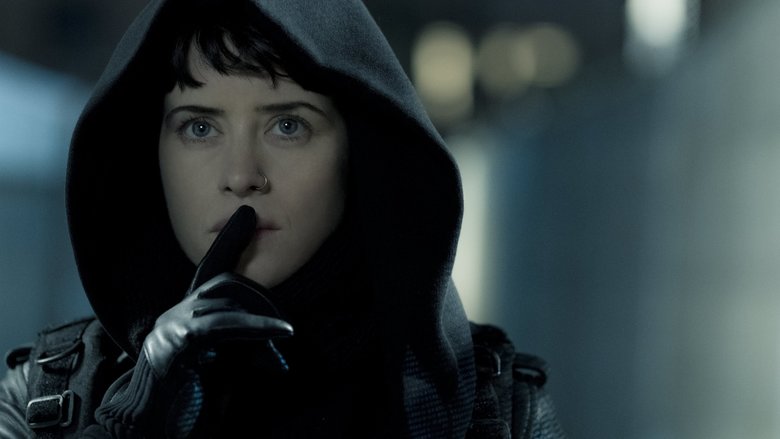
Part Five: B.K.’s Silent Return and a Champion Hollywood Fight
Backtracking slightly from the end of our last installment, Allison Burnett’s screenwriting career proved to continue without disruption– in spite of Autumn in New York’s failed reception and his public feud with Richard Gere. Surprisingly, as far as he could perceive, the entire debacle failed to have any negative resounding impact on Burnett at all.
In fact, Susan Granger (the critic who had leaked Burnett’s letter about Gere) had a son working for Paramount as an executive at the time of the Page Six publication. Dan Granger had been amused by Burnett’s letter. Soon thereafter, Paramount hired Burnett to do a rewrite.
Burnett’s place in Hollywood was still secure—or at least as secure as any Hollywood career ever is. Many other jobs were still to come.
On top of his writing assignments, Burnett also continued to churn out original spec screenplays. One such script, titled, Keyword: Love, made the rounds with studios for some time before being deemed too intimate for the big screen.
The script, written in January of 2003, brought Burnett some meetings and, eventually, a new job at Disney. It didn’t go much further until a friend of Burnett’s took it to Lifetime, where it was purchased in the summer of 2003 and filmed during springtime of the following year under the title Perfect Romance.

Perfect Romance (2004)
Something of a modern-day Cyrano de Bergerac, Perfect Romance is about a middle-aged woman who posts a dating ad posing as her divorced daughter. With the intention of aiding her lonely daughter’s love life, she begins corresponding with a young man. The only problem is, she falls in love with him herself. In the title role, Kathleen Quinlan (who Burnett was thrilled to have cast) gives the film and character grace and sophistication, and it’s believable that a man of any age could fall in love with her.

While the film is not without its generic Lifetime setbacks (minor clumsy production values, a cheesy musical score, weak supporting actor selections), Perfect Romance still manages to stand out, particularly when looking at it in the context of Allison Burnett’s career. The primary reason behind this is that it showcases a great and seasoned actor like Quinlan tackling his work with success. This was something we had yet to fully see with his produced scripts– at least the ones he hadn’t directed himself. Through Quinlan and Burnett, we see a character who’s rounded, flawed, watchable, and wonderfully human without contrived flashiness.
Perhaps because Perfect Romance was the first romantic comedy Lifetime had ever produced from scratch (as opposed to acquired once it was finished), the film didn’t attract much of an audience when it premiered on June 7, 2004. Burnett bluntly describes the rating numbers as “abysmal”.
Perfect Romance is a quiet and unpretentious work that succeeds with subtlety. Part of what makes it work is also why no one took notice of it. This was starting to become a theme in Allison Burnett’s career.

Partnering with a Screenwriter and Other Works
The steady flow of income from his screenwriting career continued to provide Burnett with the funding and comfort he needed to pursue his less-lucrative passion projects.
Aside from his books and films, Burnett has also managed to keep his soul intact with numerous short-form pieces. These include essays for numerous publications, book reviews for Variety.com written between 2001 and 2004, and, most notably, poetry.
Burnett describes his poetry by simply stating it “is classically inspired, rhymed, metered, lyrical, romantic, and very accessible. I loathe modern verse. I’m like BK in that way.” Although he’s considered self-publishing a volume of his poems, he’s not particularly ambitious about getting them seen. Many of Burnett’s poems and other short-form pieces are all currently available to read on his website.
As his writing kept him busier than ever, he also began his most significant romantic relationship to date with fellow screenwriter Chloe King in 2005.
King had previously written 1996’s Poison Ivy II and, most recently in 2017, penned the Nicolas Cage/Gina Gershon-starring thriller Inconceivable. Chloe was also the daughter of legendary producer Zalman King, most known for producing such erotic dramas as Nine ½ Weeks and the Showtime series, Red Shoe Diaries.
The union produced two sons– Keats born in 2006 and Winslow born in 2008, both of whom Burnett unabashedly adores. Burnett and King eventually legally wed in 2012.

The House Beautiful (2006)
Since Christopher’s sales were only a modest success, Broadway Books passed on publishing its sequel, which Burnett had already completed in late 2002.
Much like Christopher, Burnett had returned to an early manuscript for his second novel. That manuscript was also written when he was a young artist struggling in New York, and was reflective of his life at the time. Tompkins Square, originally written in 1988, centered around a group of young people who dwell in different rooms of the same Manhattan brownstone, all under the supervision of an eccentric landlady who only rents to artists.
Adrian, an introverted astronomy student who is seeking answers about his recently departed father, shows up with a garbage bag full of old science papers inquiring about vacancy. The landlady incorrectly assumes that the garbage bag is filled with budding attempts at poetry and he is approved for a room. Adrian is then introduced to the lives of the young artists within: a beautiful female painter, a tortured actor, a promiscuous musician, a depressed poet, a manic shut-in novelist. Adrian’s summer is filled with their straight and homosexual love lives, their mental illnesses, their escapades with prostitutes and deranged exes, etc.
In the fall of 2002, while Burnett was still eagerly awaiting the publication of Christopher, he began to rewrite Tompkins Square. While he still felt close to the material, he also knew the book needed more heart, humor, and accessibility– not to mention “literacy and panache.”
It needed B.K. Troop.
After Burnett replaced the landlady with B.K., and let B.K. narrate the entire book, the narrative took flight, and Tompkins Square became The House Beautiful.
B.K. was now the head of the household, having inherited the building from his former landlady and friend. B.K. christens the dwelling “The House Beautiful” and transforms it into an affordable commune for artists– for no other reason than that his government disability checks are too meager to cover the property tax and mortgage payments. B.K. chooses artists because, “the thought of living with anyone else depressed me to no end. What on earth would there be to talk about?”
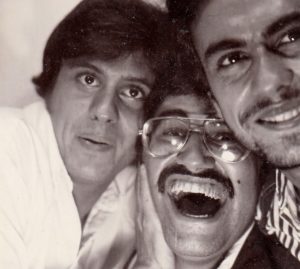
Adrian is still a central character to the story, only now the subject of B.K’s obsessive interest. Upon their first meeting, B.K. instantly finds something irresistible and familiar about the young man “scented with innocence”. Like his relationship with Christopher, B.K. finds himself mentoring the young Adrian.
That being said, The House Beautiful is by no means a simple retread of Christopher.
For starters, its humor is more lively, fun, and unpredictable. Amongst his many detailed shenanigans in the book, the most notable of B.K.’s is when he has to “pose” as mentally ill when his eligibility for government disability is due for renewal.
B.K.’s insanely jealous, and much younger, Vietnamese boyfriend, Pip, provides some of the most hilariously dark and absurd passages Burnett has ever written. The “veritable contortionist” in bed is also an exhaustively needy psychopath who threatens suicide at the mere mention of Adrian.
Perhaps most importantly, however, The House Beautiful differs from Christopher in the sophistication of its execution and its resolution. The intersecting lives within the household provide Burnett with the opportunity for more ambitious storytelling, opposing the (equally successful) intimacy of Christopher.
Like much of Burnett’s best work, the book’s climax is another example of what, by now, should be the classic Burnett Epiphany: all the story’s elements come flooding at the reader in its final moments like an emotionally cathartic, and very welcomed, smack in the face. Adrian is finally “relieved of his deceit” about his history and his true connection to B.K. What transpires between the two characters becomes one of the most rewarding and involved human relationships Burnett has ever created.
A Silent Reception
Like his experience writing Christopher, Burnett was thrilled and fulfilled by his experience in completing The House Beautiful. Unfortunately, the book’s reception was all but nonexistent this time around.
Burnett’s literary agent at the time, Eric Myers, finally managed to sell the book to Carrol & Graf, who published it in the fall of 2006. Unfortunately, the publishing company’s fiction department was dismantled shortly after, when it was acquired by Perseus Books Group in January 2007. The book is now out of print, though copies are easy to track down on Amazon.
The House Beautiful did, however, continue to receive support from the homosexual literary community, even though Burnett was, by this time, “out of the straight closet.” Burnett appeared on GLBT radio shows to promote the book, GLBT literary journals continued to show support, and he did multiple signings at GLBT bookstores.
In the end, it was all a mixed blessing. Although B.K.’s sexuality initially brought Burnett a loyal niche audience, it also put a misleading label on his novels that brought about a great degree of indifference from the mainstream literary community. In an essay he wrote for HuffPost, titled B.K. and I, Burnett himself stated:
“If only the straight literary world were this kind to gay novelists! The sad fact is that despite the fact that 90 percent of B.K.’s narration concerns the lives of straight people, the mainstream press ignores him. It’s as though the books’ spines had been marked with an invisible pink triangle. Borders and other chain stores relegate them to the gay section in back. Amazon labeled The House Beautiful, for some reason, Gay Poetry.”
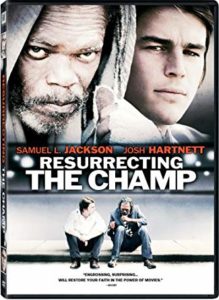
Resurrecting the Champ (2007)
Off the strong reception of his Max/Home screenplay back in 1997, Burnett had been hired to adapt J. R. Moehringer’s L.A. Times article, Resurrecting the Champ, by producer Mike Medavoy.
Burnett’s fictionalized screenplay tells the story of P.J., an ambitious sports writer chasing the story of his life through “Champ”, a homeless man claiming to be a boxing legend. The eventual article within the movie becomes a huge hit until P.J. finds out he was mislead by Champ’s mentally ill delusions. As a dramatic twist in Burnett’s script, the protagonist discovers this after the story is published, something Moehringer actually discovered while writing his article.
Burnett, diligent in his research, was the only member of the production who sought out and met the real “Champ”. Armed only with Champ’s picture from the L.A. Times, Burnett found him on Santa Ana’s skid row and recorded an hour-long conversation with him. The resulting cassette would be a valuable resource for the production, as Samuel L. Jackson (who wound up portraying the character) would partially base his vocal performance on the recording.
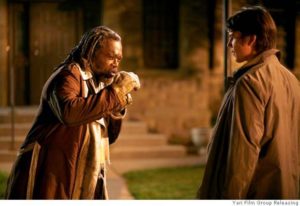
Burnett’s screenplay for Resurrecting the Champ (which has been read by this author) is a moving character piece that tackles many themes: journalistic ethics, fathers and sons, mental illness, homelessness, and, of course, boxing. It’s told with humor, heart, and frankness.
Like Burnett’s best work, Champ’s original narrative is air-tight, the pacing is flawless, and the story is full of moments that build resonance and meaningful relationships between its characters. In the end, the intended audience is set up to get the emotional fulfillment it needs, built entirely off Burnett’s focused and developed structure.
Predictably, by now, this didn’t last.
Resurrecting the Champ changed many hands over the years of its development history. Michael Bortman did an extensive rewrite early on, adding a subplot about the grooming of P.J. for an on-air position at Showtime. After many years and incarnations, the script ended up in the hands of a gifted filmmaker named Rod Lurie. Though impressed by the early drafts of the screenplay, Lurie decided to make further changes of his own to its already-cluttered story.
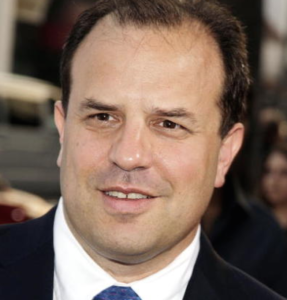
Champ’s development process was so scattered that the question of who would retain final screenplay credit wound up in a case of arbitration. Burnett and Bortman wound up receiving credit. Lurie and Chris Gerolmo, who had each done an extensive overhaul, did not.
In spite of the battling, there are many positive things to say about the final film of Resurrecting the Champ. It showcases strong lead performances by Josh Hartnett and Samuel L. Jackson. Lurie’s direction is an example of fine craftsmanship, and exhibits a sincere, though sometimes misguided, passion for the story. Unquestionably, it’s hard to ignore that Champ has some wonderfully executed elements and moments that stand on their own as great.
As a complete film, however, Resurrecting the Champ, quite frustratingly, doesn’t reach greatness. A victim of too many cooks in its pre-production kitchen, the film lacks focus and emphasis on just what its central story and theme(s) should be. The end falls flat as a result, in spite of the quality, heart, and talent behind it that is evident throughout.
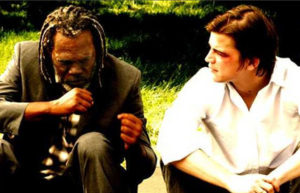
The film fared relatively well with critics, drawing many solid reviews that pointed out the film’s strengths and weaknesses, but few raves. Audiences, however, turned quite cold to the film immediately. Although the film was modestly budgeted at a reported $13 million, it failed to earn even half of its budget back through combined domestic and overseas ticket sales.
Burnett is fond of Resurrecting The Champ’s final cut, though not without his reservations. On top of his obvious complaints about the film’s saturated structure, he also felt Champ’s true character had been diluted in the process:
“None of the later collaborators ever met him, so I don’t think they quite understood that he was a schizophrenic, in and out of reality. By the final draft, the Champ did a fair degree of wisecracking and seemed more like a troubled con man than a guy who lived in fantasy. This was not a problem for most viewers, but having met him, it never struck me as heartbreaking as the real guy.”
A happy ending to their conflict, Burnett and Lurie both speak admirably of each other today. Burnett particularly notes Lurie’s passion and talent, and sings high praises for his Champ follow-up, the legal thriller, Nothing But The Truth.
Lurie, in his commentary track for the DVD of the film, goes out of his way on numerous occasions to compliment Burnett’s talent, at one point calling him “an exquisite writer.” Lurie also makes it a point in the same track to take the blame for making a film that “went astray” and was “about too many things.”
Our piece on Allison Burnett will continue in Part 6 of 9, which will focus on a series of screenwriting assignments he would take on for Lakeshore Entertainment and the publication of his third novel, Undiscovered Gyrl.


